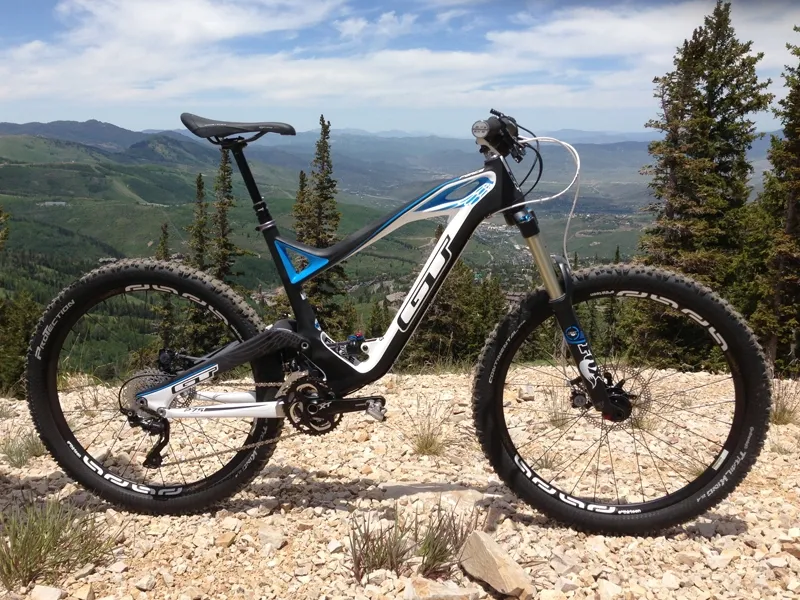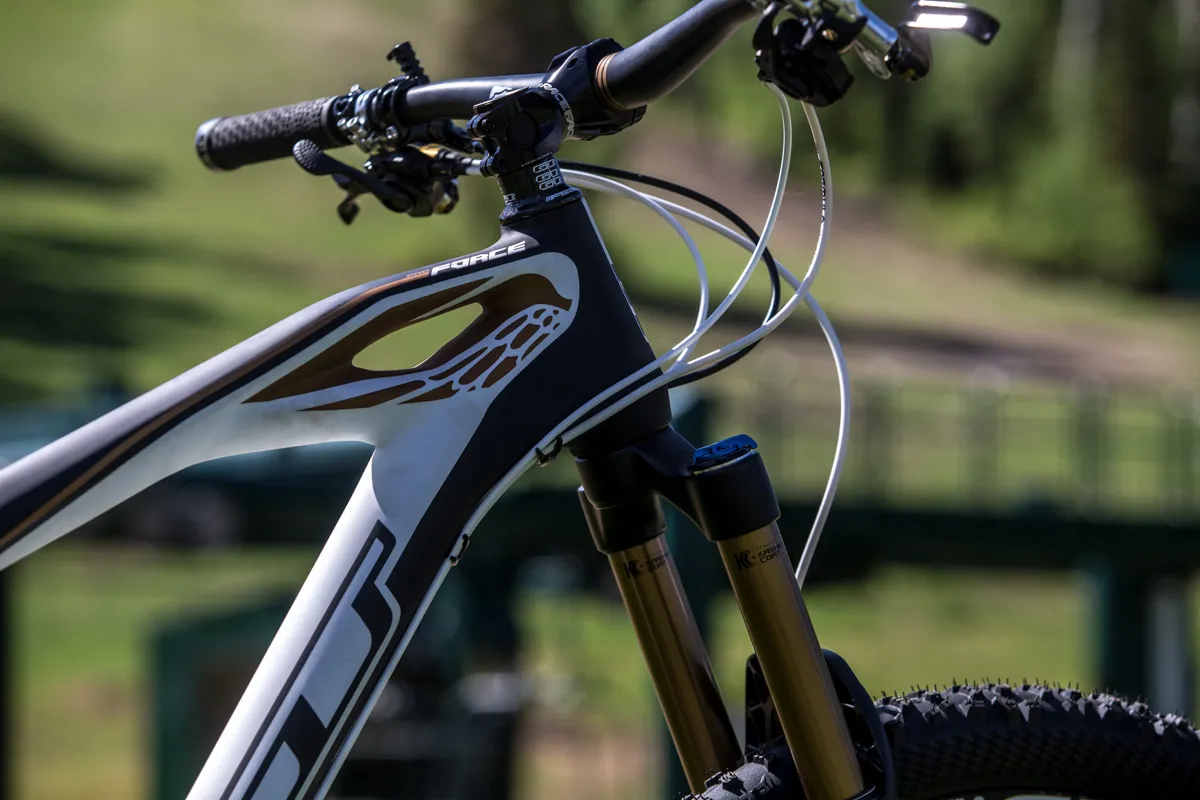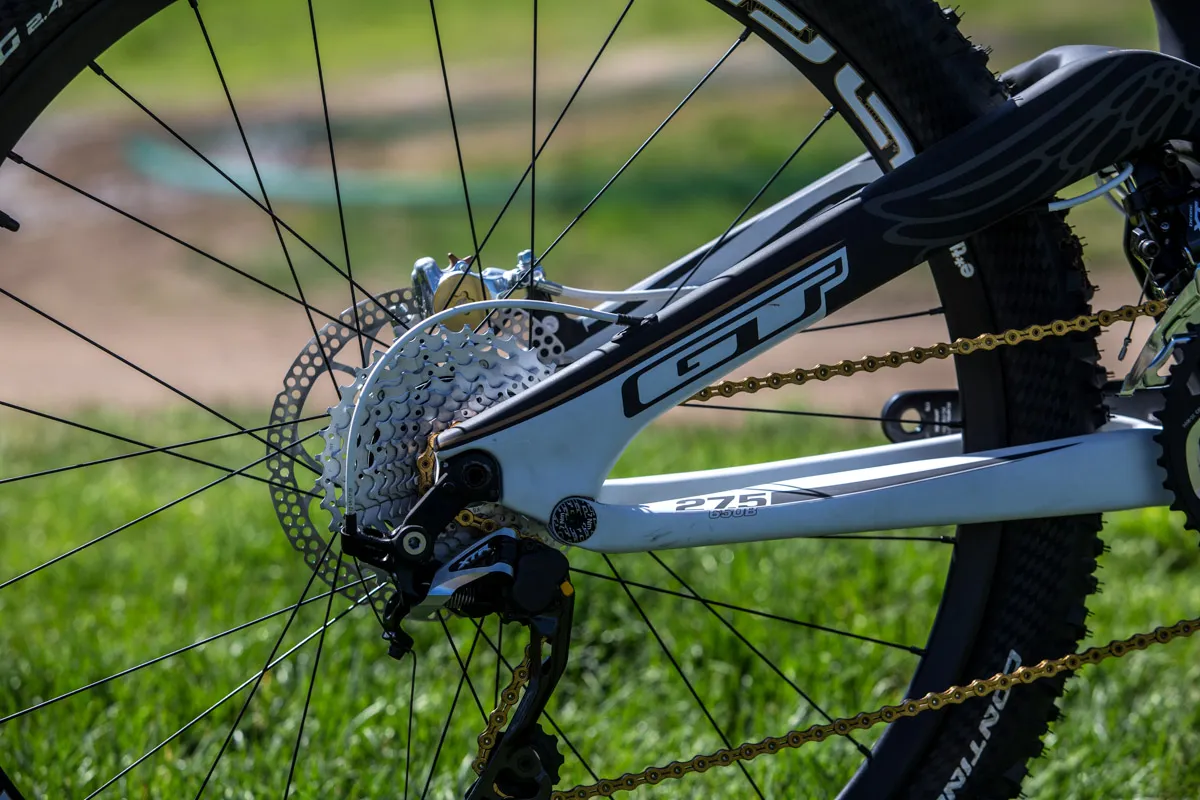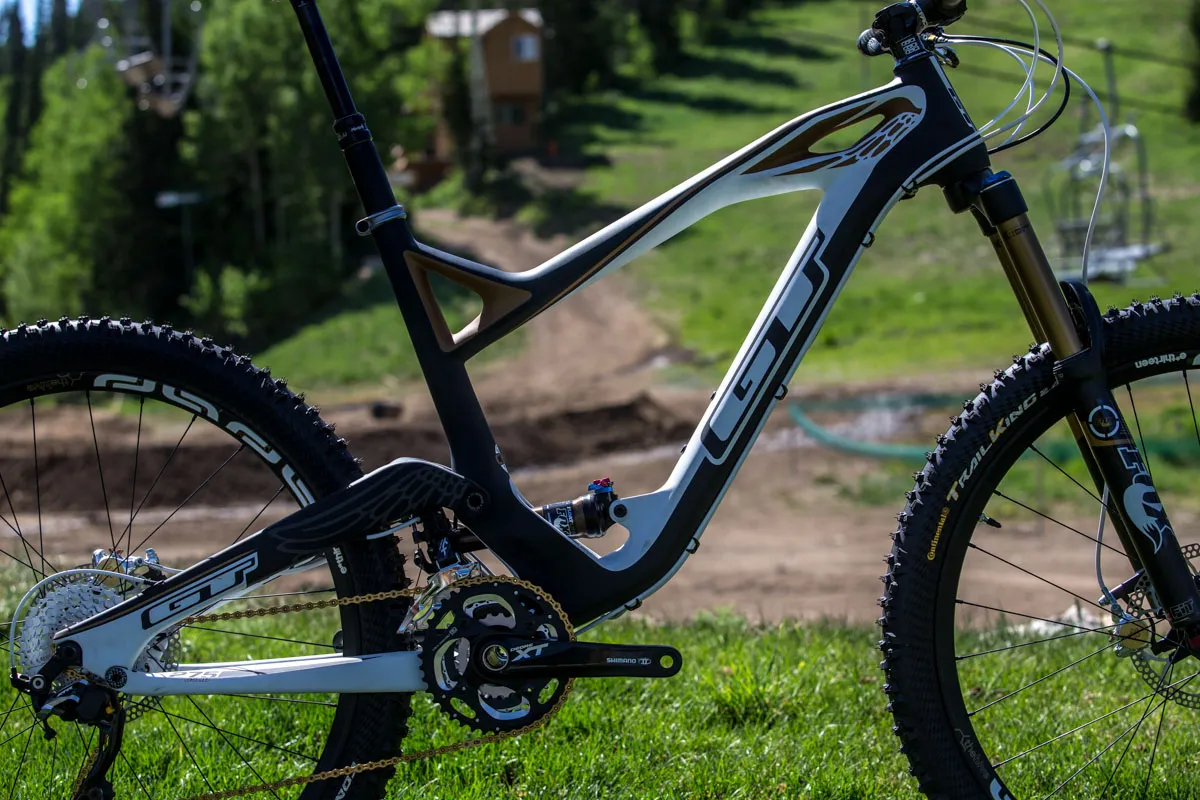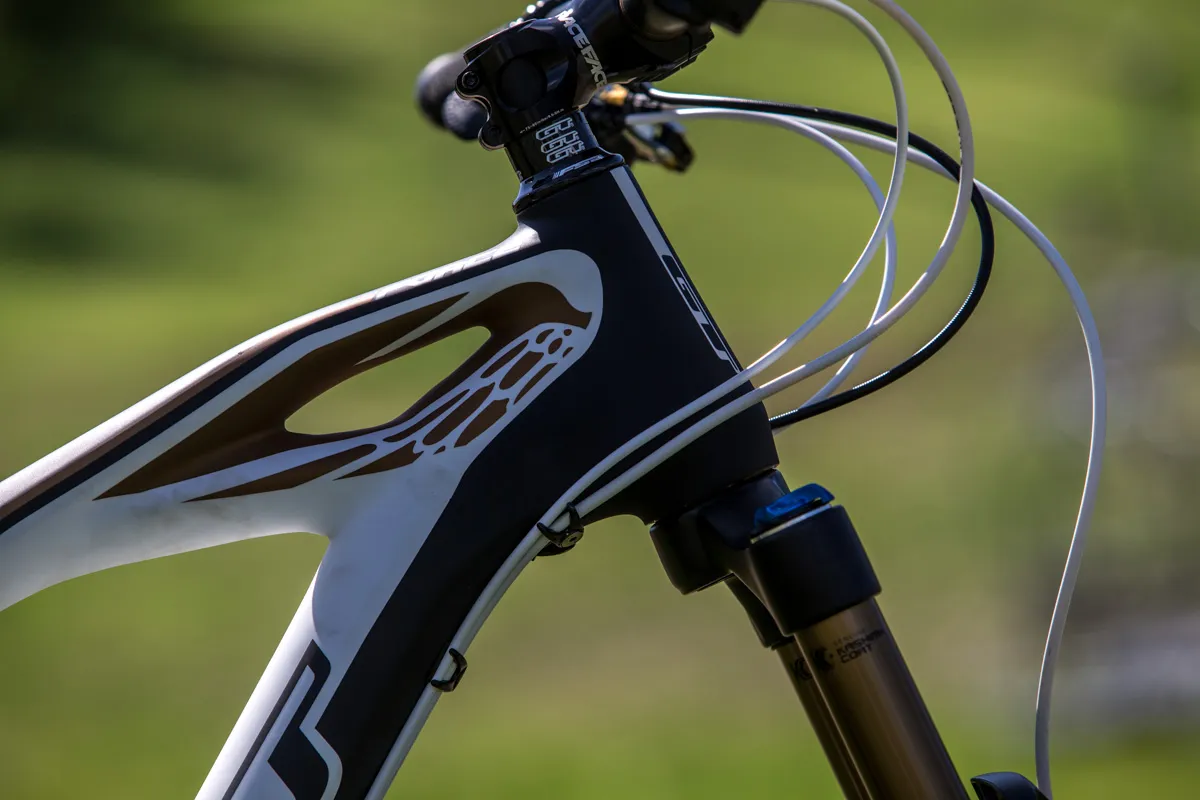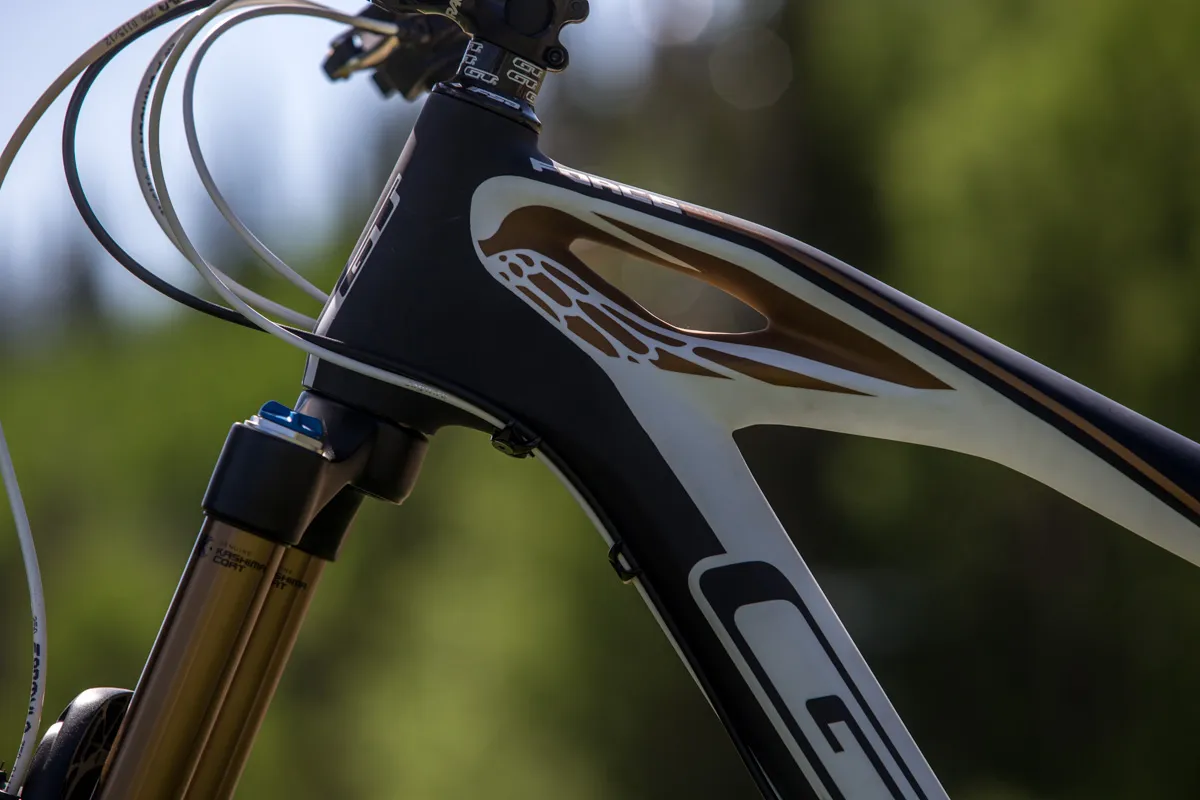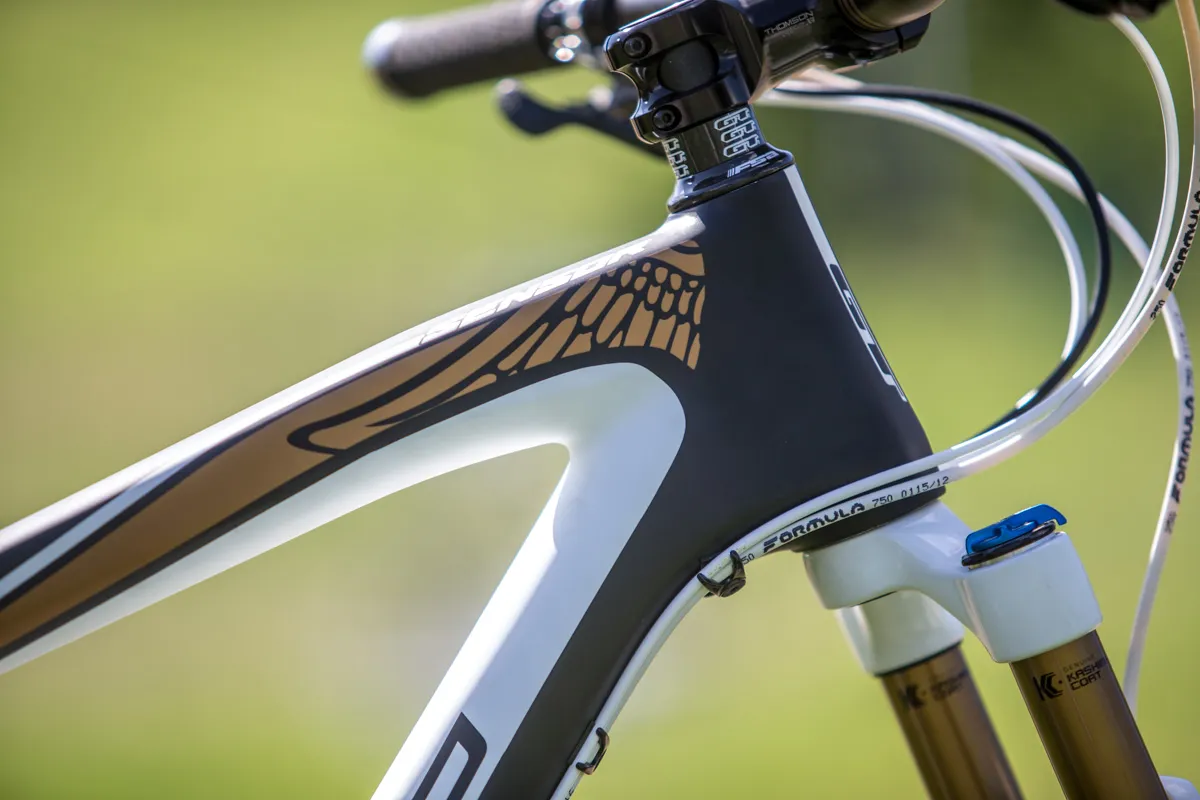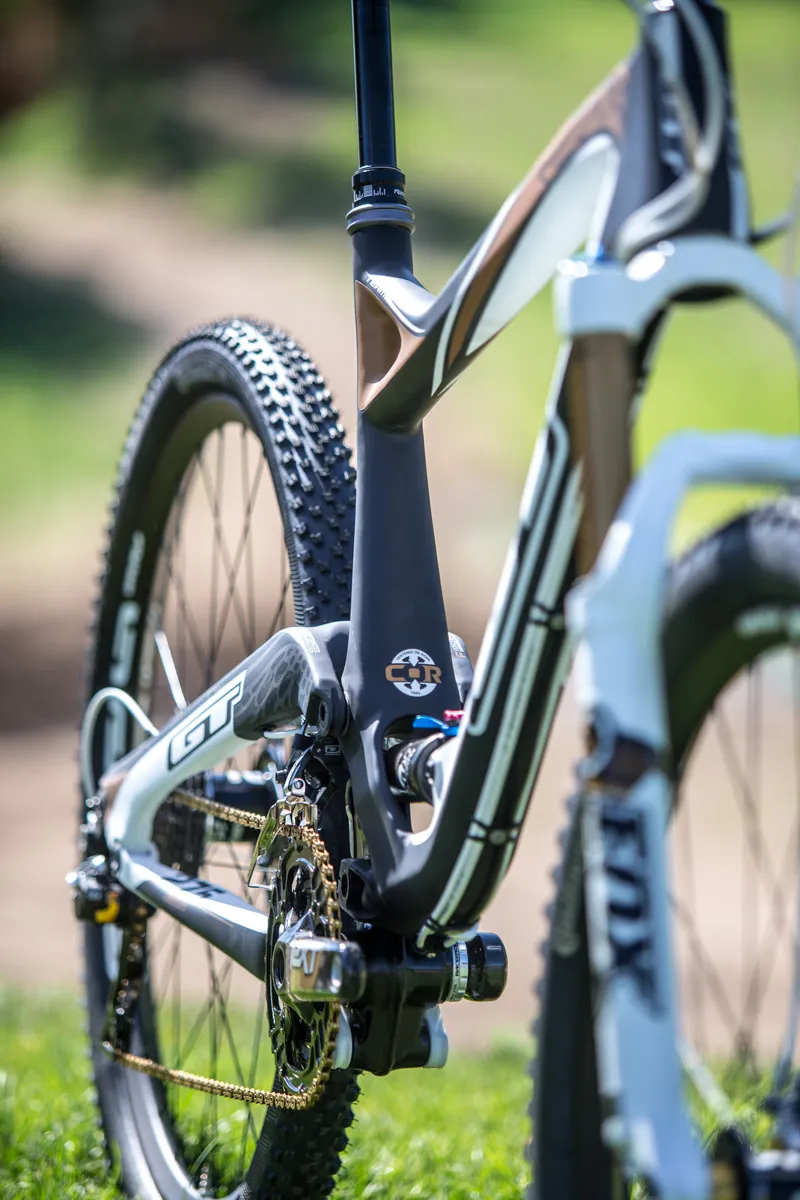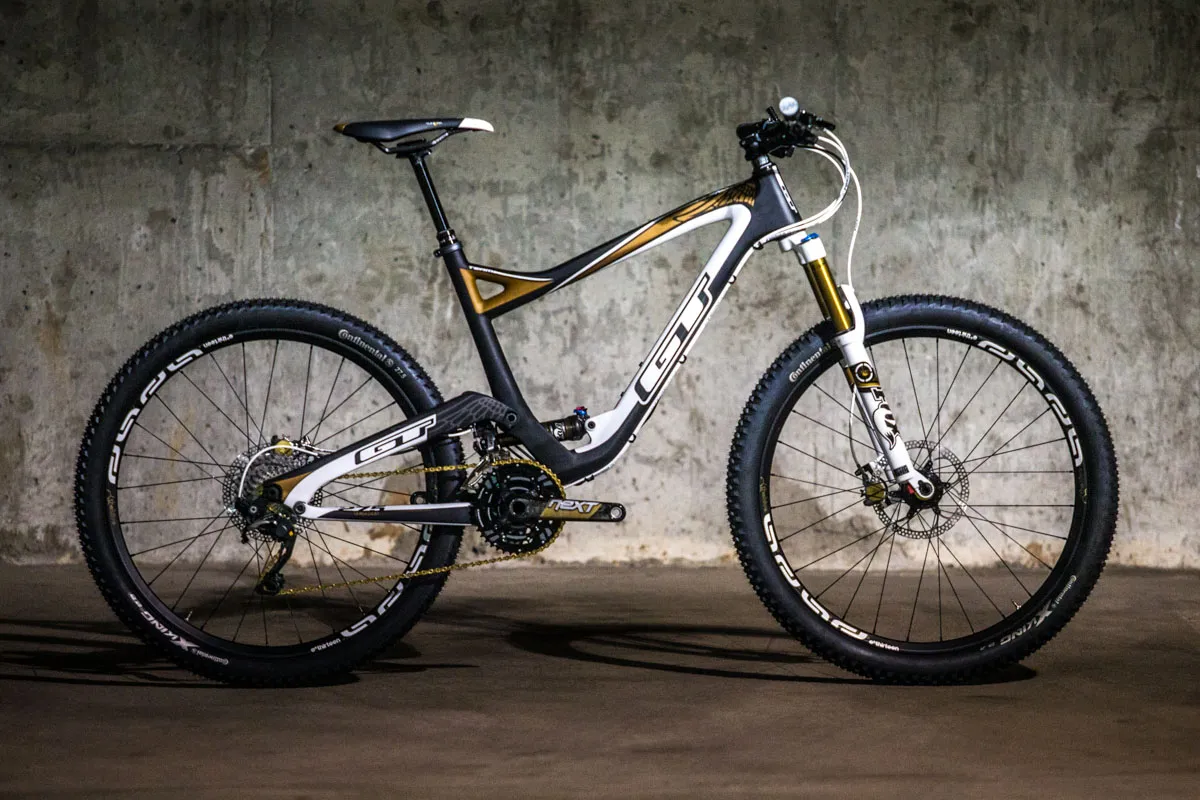BikeRadar recently attended the launch of two new models from the GT 2014 mountain bike lineup – the 150mm travel all-mountain Force and 130mm travel Sensor.
Both bikes have familiar names but have been subject to a ground-up redesign. With a succession of World Cup wins already coming in on the latest generation of the GT Fury downhill bike, these 2014 models could spell success for a brand that has arguably missed the mark in recent years. Prices are to be confirmed for both bikes.
GT Force
Sharing little in common with its predecessor, the Force frame is now exclusively made from carbon. Gone is the awkward-looking, dated i-drive system, and the bike has been optimised around the 27.5in (650b) wheel size.
The design process involved spending a lot of time researching different riding disciplines and rider preferences. From this, GT came up with a checklist for the Force to conform to. They rethought the way they fit riders to bikes, and each Force frame now uses a longer front centre, while a 60mm stem will remain consist across all sizes in the range. A 760mm low-rise handlebar is also standard fit.
Geometry changes are dramatic compared to the previous model; it’s an altogether slacker, lower and longer setup. If you’re looking for numbers then the new head angle stands at 67.2 degrees, while the wheelbase is quoted at 116.2cm and the BB is now a smidge under 13.7in from the ground. GT haven’t just plucked these figures from anyone else, either – they’ve been optimised during extensive testing by the likes of Dan Atherton and Hans Rey.
Steering accuracy was also determined as a top priority. For that reason, two of the three Force models available are built with a Fox 34 Float CTD fork, while the entry-level bike gets a slightly less burly RockShox Revelation air fork.
In another attempt to please the modern all-mountain rider, GT spec an internally routed dropper post on each Force.
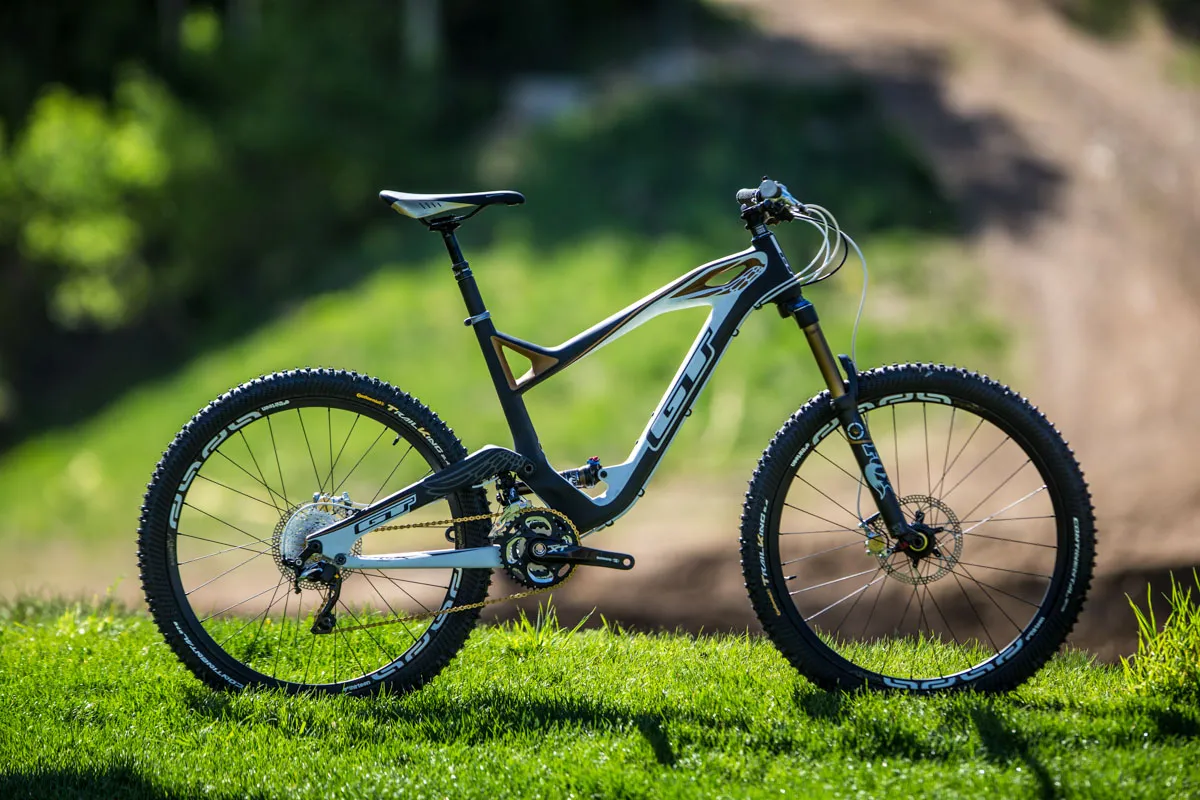
The GT Force Carbon Team is the range-topper
In a move that won’t be to everyone’s taste but should make the majority happy, GT have decided to spec Shimano’s recent compact triple (40/30/22T) transmission across the range. The ratios have been specifically designed to complement a big-wheel bike and offer a range wide enough for all trail scenarios. Each Force gets Formula brakes, with 180mm rotors at both ends.
The new Force debuts GT’s Angle Optimized Suspension (AOS). Despite being badged as a totally new system, AOS still holds a few things in common with the previous generation GT Independent Drive (i-drive).
The high pivot is still there, necessary to provide the bike with a rearward arcing wheelpath and the small bump sensitivity that comes with it. That pivot point is only made practical through use of another new component – GT call it the PathLink, and it’s essentially a large forged aluminium component that moves the position of the bottom bracket in order to reduce chain growth.
As the suspension cycles through its travel, the link moves the position of the bottom bracket. As a result, the transmission will have less influence on the rear suspension. Transmission influence hasn’t been completely removed, though; instead, the PathLink provides a moderate level of chain growth that GT say is comparable to that on competitor bikes.
The linkage ratio of the Force has been tuned to offer a linear action for the first 50 percent of travel, remaining slightly progressive for the remainder. All rear shocks are provided by Fox and feature their user friendly, bob-fighting CTD technology.
Stiffness certainly hasn’t been overlooked; the frame uses 15mm hollow thru-axle suspension hardware along with dual bearings at the chainstay pivot to keep things rigid and durable. The rear axle is a 142x12mm affair using the simple and proven Maxle system.
A complete frame including shock tips the scales at a claimed 2.89kg (6.37lb), while complete builds vary between just 13.26kg (29.23lb) and 13.54kg(29.85lb).
GT Sensor
The 130mm GT Sensor trail bike has been subject to the same overhaul as the Force. It too gets 27.5in wheels, along with all-new geometry and an updated suspension design. Unlike the Force, though, it will be sold in a more affordable aluminium version.
Extensive research into trail rider priorities means GT have dressed each new Sensor in a thoroughly modern kit list. That means each bike uses a 740mm wide bar and sensible 80mm stem regardless of size. All but the entry-level model will feature a dropper post off the peg.
Clutch-equipped rear derailleurs have been chosen to keep the triple setup from flapping excessively, and the majority of bikes will come with tubeless rims and tyres. As with the Force, Formula brakes are used on each bike, with 180mm rotors front and rear.
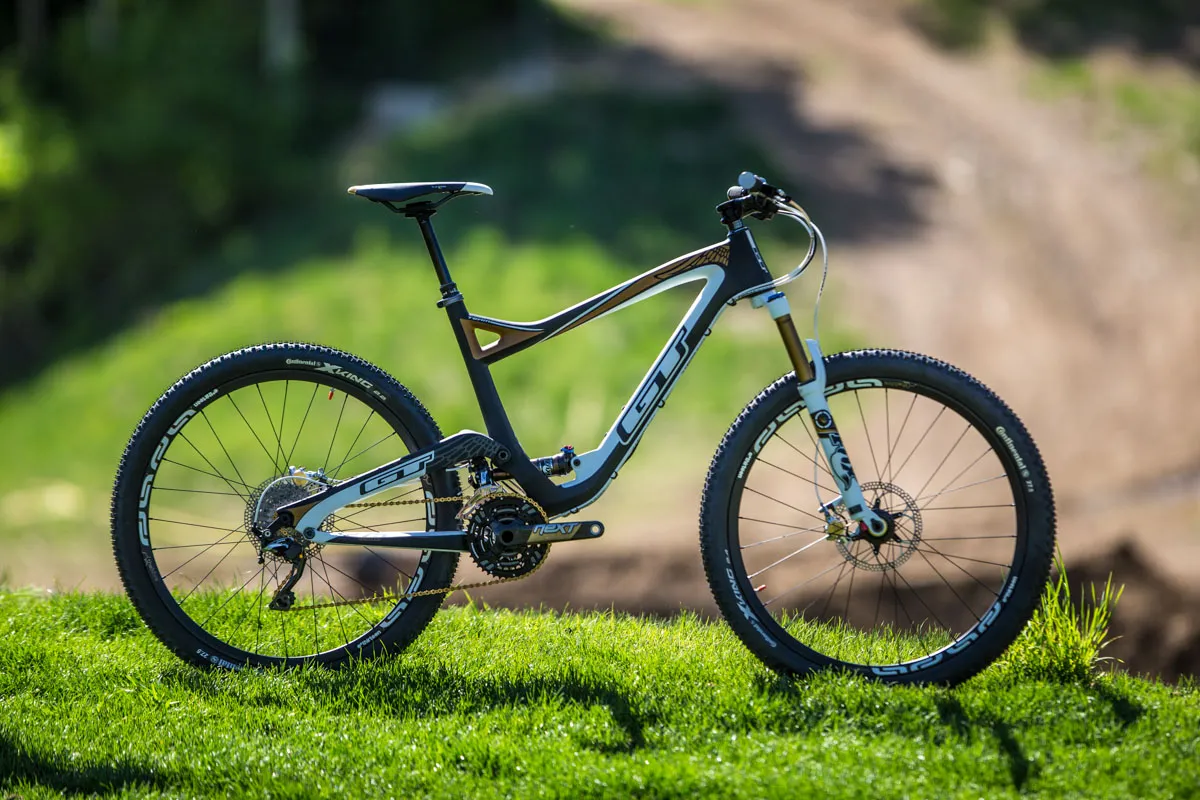
GT Sensor Carbon Team
With a 68.5-degree head angle, the Sensor is just over one degree steeper than the Force; it also has a lower BB height, at 13.54in. Using the same AOS/ PathLink suspension, the Sensor delivers 130mm of travel, although the Fox CTD units have been tuned to deliver a more aggressive and, in turn, more efficient pedalling platform.
The aluminium version of the Sensor features identical geometry and sizing, so riders will have the option to save a chunk of cash for the sake of a few welds and a weight penalty of around 650g.
A complete carbon frame including shock tips the scales at a claimed 2.72kg (5.99lb), while the alloy version drops in at 3.38kg (7.45lb). Complete builds vary from 12.16kg (26.8lb) and 14.18kg (31.26lb).
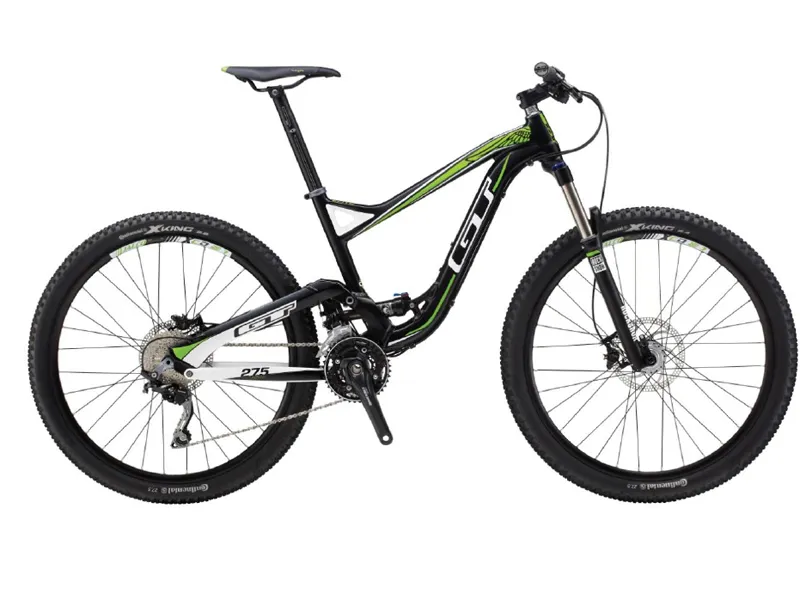
The entry-level, alloy framed GT Sensor Elite is one of the lightest in the range
A standout model for us is the Elite. Set to be the cheapest model in the Sensor lineup, it goes without a dropper post or tubeless tyres. The result is an impressive 12.9kg (28.4lb) complete weight that shouldn’t break the bank.
The UK can expect GT Force and Sensor stock to land around October, with the US getting bikes a little sooner. We’ve been spending time ripping both bikes on the dusty trails of Deer Valley, Utah, so stay tuned to BikeRadar for a first ride of each model.
